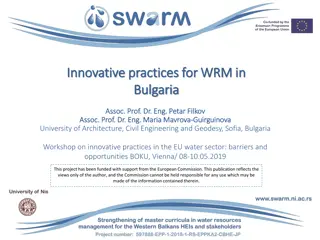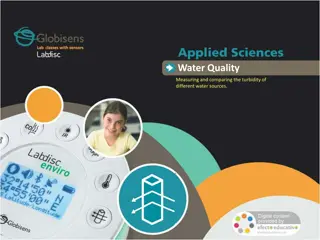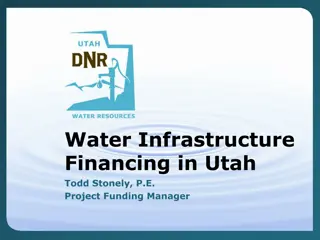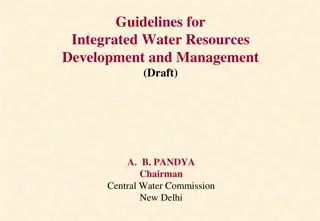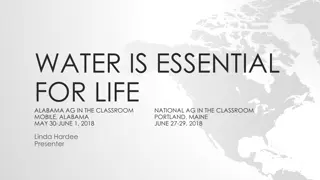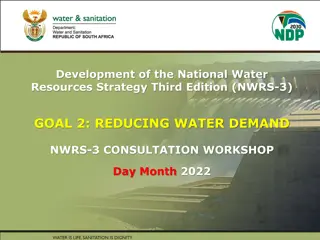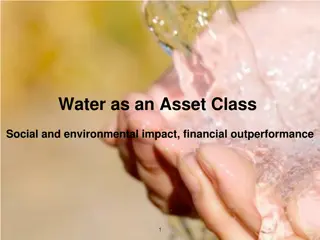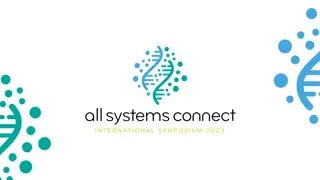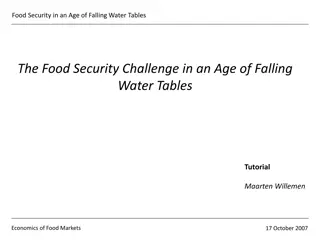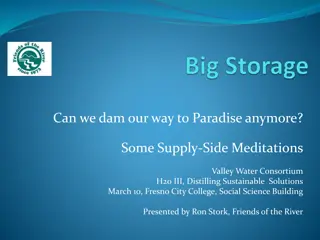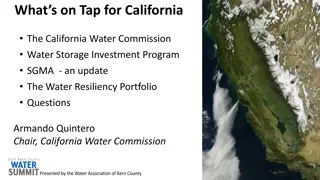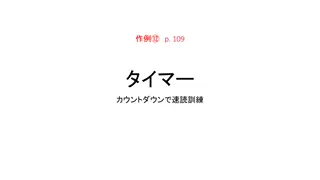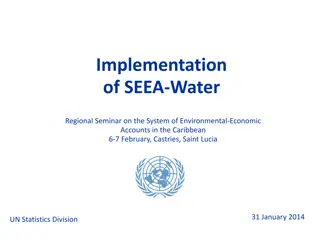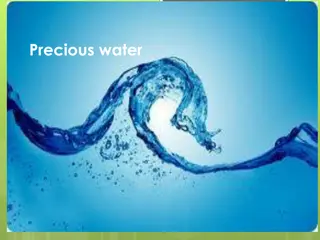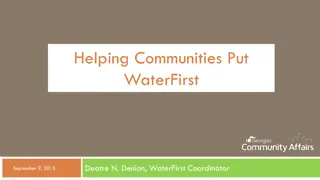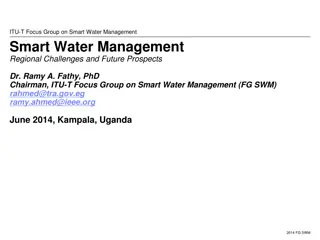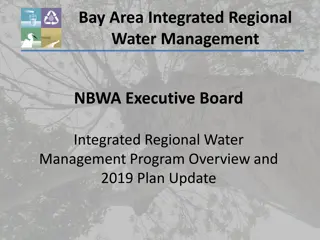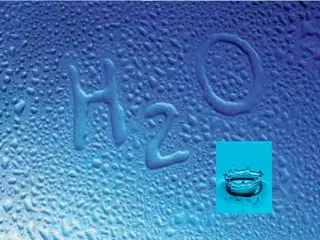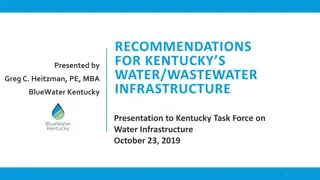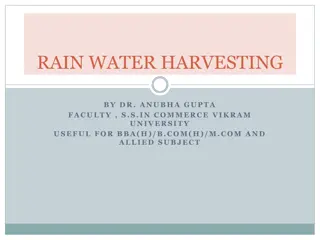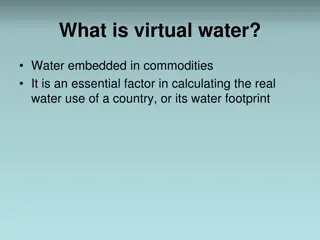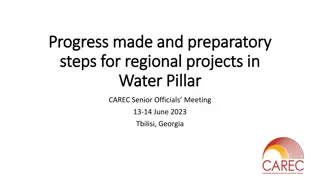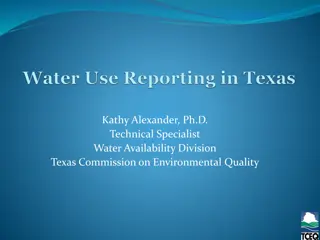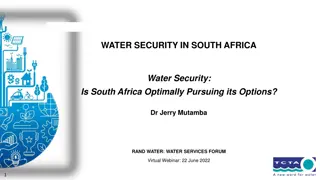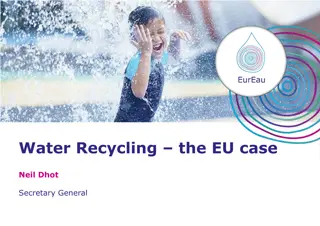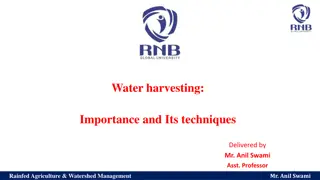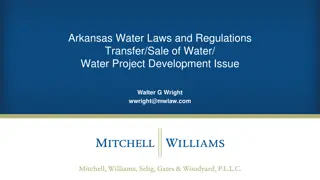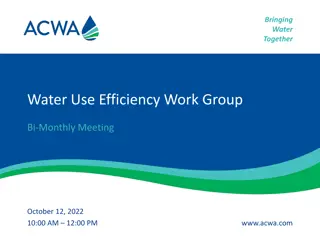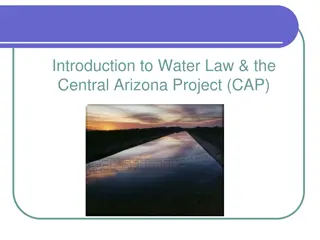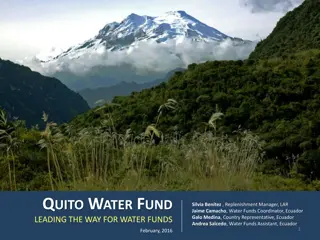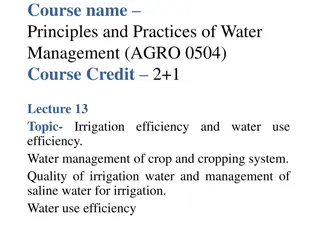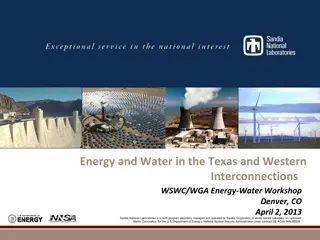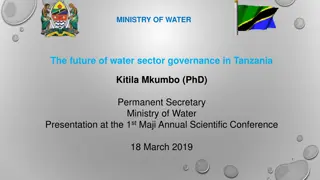Challenges and Opportunities in Lebanon's Water Resources Management
Lebanon faces constraints in managing its abundant water resources due to limited storage facilities, overpumping of groundwater, and political and financial obstacles. The impact of climate change further exacerbates water scarcity, necessitating innovative solutions for sustainable water management in the region.
Download Presentation

Please find below an Image/Link to download the presentation.
The content on the website is provided AS IS for your information and personal use only. It may not be sold, licensed, or shared on other websites without obtaining consent from the author. Download presentation by click this link. If you encounter any issues during the download, it is possible that the publisher has removed the file from their server.
E N D
Presentation Transcript
Water Resources in Lebanon - Portfolio - Solidarity with Lebanon Neutrality brings Prosperity Wisam Kanj June 26,2015 - Phoenicia Hotel
Water resources in Lebanon: overview Annual precipitation: 800 mm Essential precipitation is snow, the major water source during the dry period 75% of total surface flow volume occurs from January to May Total average renewable water flow: 2700 Mm3 /year Three international watercourses: Al Assi, Hasbani, Nahr El Kebir Losses in water flowing towards neighboring countries: 950 Mm3/year
Water resources in Lebanon :Constraints in brief Country blessed with abundant water resources , but : 90% of rainfall occurs within a period of 3 months Lebanon s soil geological nature (Karstic) Groundwater is the major source used for water supply (overpumping, seawater intrusion, water table level drop ) Deficiency/low number of wastewater treatment plants Absence of surface water storage facilities Objectives of the 10-year IWRM strategic plan were not met Political and financial constraints Etc
Global water balance in Lebanon : Non Conventional Water NB: Climate Change reduction: 30% on the Total Renewable resource
Effect of climate change: Lebanon Prediction for Med. region: warming ranging between 2 C - 4 C. Precipitation will range between 50-60 days rather then 80 to 90 days. Dramatic consequences on the renewable annual water volume which mainly depends on snow melt. Initial Conditions Warming 2 C Warming 4 C 1200 Mm3 700 Mm3 350 Mm3 Water from snow melt 2700 Mm3 2200 Mm3 1850 Mm3 Total renewable water Consequences linked to usage conflicts (potable irrigation trans-boundary water)
Water balance-Global July-October (Millions of m3) Year 2010 Year 2040
Water demand in Lebanon : IWRM Water Stress Two scenarios Sustainable management - IWRM Stockages Dams and hill lakes 850 Mm3 + Non Conventional 565 Mm3 Network efficiency Potable water 50% 80% 2040 Irrigation: - new techniques Water establishment Ministry of Agriculture + - ~ 400 Mm3 - Hydraulic Balance
Water demand for irrigation Water stress scenario : 10 000 m3 / ha Sustainable WRM scenario : 6000 m3 / ha And this is only concerning irrigation!
Water Demand for domestic and industrial Water needs dom. and indus. = 300 l /day/cit. Year 2010 Year 2040
Measures to prevent the water stress scenario First : reduce the amount of water discharging into the sea Application and update of the strategic plan (measures already mentioned) in order to improve water quality and quantity Introduce new concepts: Use of non-conventional water resources Greywater treatment and reuse Exploit marine fresh water sources (seawater springs) Seawater desalination .
Non Conventional Water Water reuse Exploit sea water springs Grey Water Desalination of sea water
Lebanon Strategic Plan 2000-2010-2018 General Principles Ensure additional water storage installations (dams, lakes, recharge of aquifers ) Establish drinking water projects (Distribution network and efficiency, Public Private Partnership involvements,...) Consider various irrigation projects (Ensuring food security, network efficiency ) Ensure wastewater collecting projects and treatment plants (water reuse for irrigation, municipal use and artificial recharge of aquifers ). Consider infrastructures for flood mitigation, rectification and alignment of rivers beds. New Water Mass : Conventional and Non-conventional water
Storage capacity in Mm3 Site Designation Coast (Million $) Qarqaf 20 75 Bared 40 138.5 El Mseilha 10 55.7 Janneh 30 EEBML Dar Beachtar 55 CDR boqaata 7 58.9 Aazzounieh 4 44.9 Maaser El Chouf 2.5 37.9 Kwachra 0.35 3.2 Balaa 1.5 33.9 Berhacha 0.6 20 Damour 60 CDR Assi - I 37 36.48 younine 7 60 Ibl El Saki 50 250+ TOTAL 324.95 814.48
Existing Irrigation Areas There are 67 existing irrigation schemes with a total equipped area of 100,000ha. In addition, there exist 24,000ha of small scale irrigation schemes. Thus, existing total irrigation area is evaluated to be 124,000ha.
Current and Projected Water Demand for Irrigation 1600 1400 Irrigation Water Demand (MCM/Year) 1200 1000 800 1435.0 1367.0 1330.0 600 1185.0 1060.0 924.0 400 782.0 200 0 2002 2005 2010 2015 2020 2025 2030
Strategic Choices Facing Irrigated Agriculture : Lebanon Improving irrigation efficiency saves water Irrigation efficiency can be improved through incentives for water-saving technologies, technology transfer through effective applied research and extension services to improve on-farm irrigation efficiency, and raising cost recovery in irrigation schemes. Rehabilitating and modernization of the irrigation schemes main networks.
Introduction to IWRM : Integrated Water Resources Management IWRM promotes the coordinated development and management of water, land and related resources in order to maximize the resultant economic and social welfare in an equitable manner without compromising the sustainability of vital ecosystems. IWRM promotes two components :Vertical and Horizontal Vertical : is the technical implementation of the projects based on the water cycle, it starts from fresh water to reuse. Horizontal : is a multi actions, involving the role of education, health, environment, finance, PPP, governance, economy, agriculture . IWRM should involve at the same time both components to be applied on the new concept of basin management.
Introduction to IWRM IWRM promotes the coordinated development and management of water, land and related resources in order to maximize the resultant economic and social welfare in an equitable manner without compromising the sustainability of vital ecosystems. The role of education : water culture Education is the foundation on which sustainable development pillars (environment,economy,society) rely Education at all levels can shape the world of tomorrow, equipping individuals and societies with the skills and values to live in a sustainable manner. Education fosters respect for human needs that are compatible with sustainable use of natural resources and the needs of the planet; and nurtures a sense of global solidarity.



